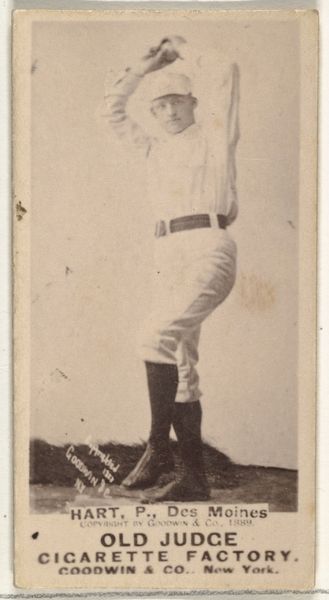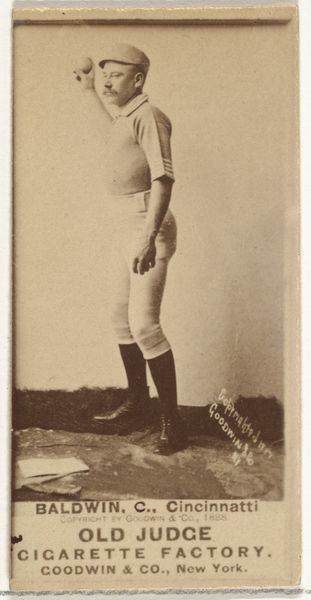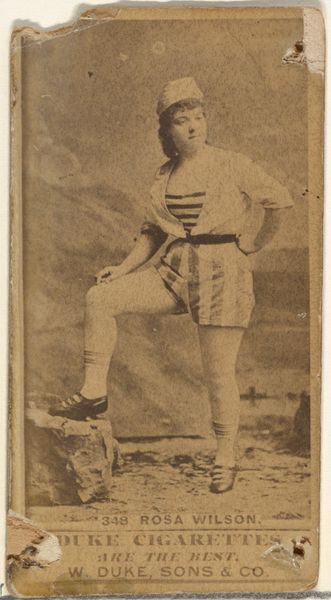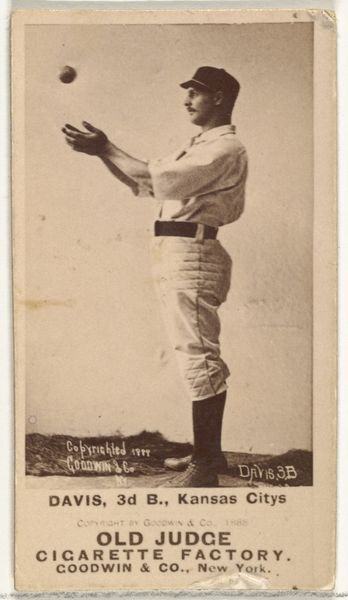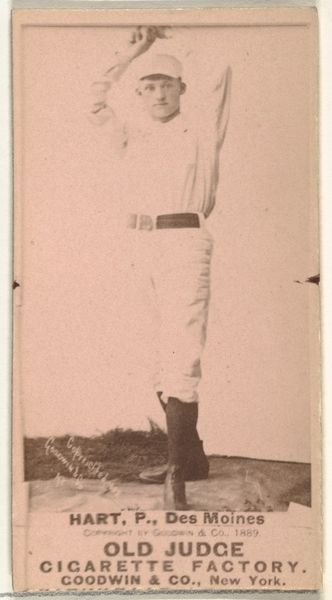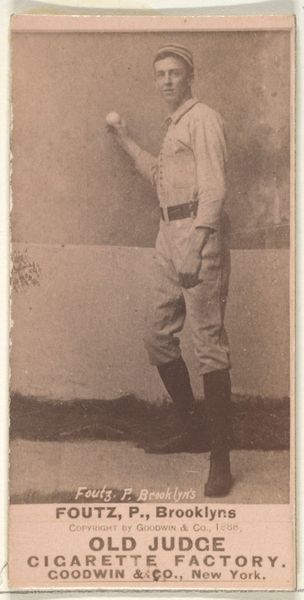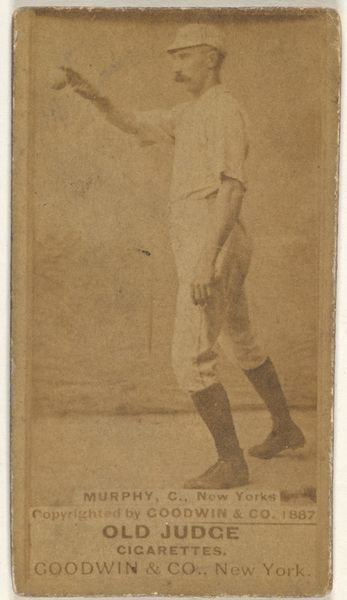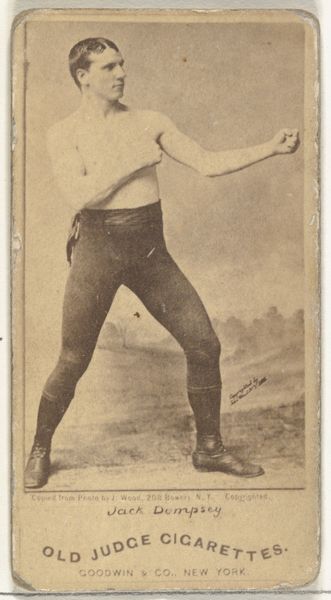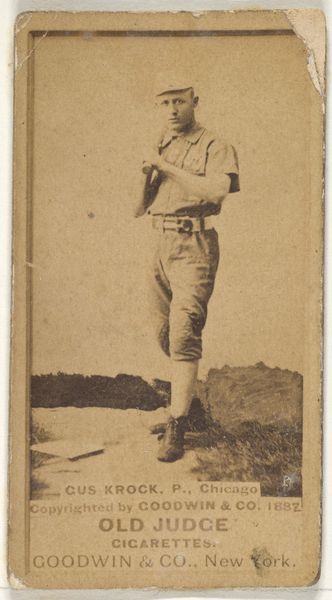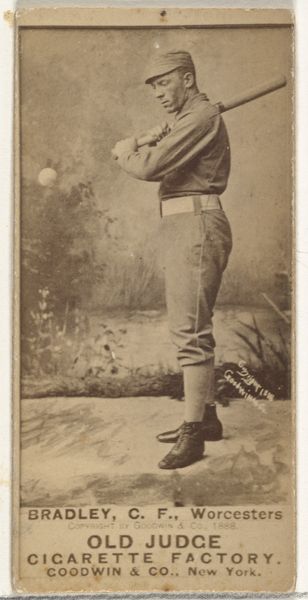
Paul Revere "Shorty" Radford, Right Field, Cleveland, from the Old Judge series (N172) for Old Judge Cigarettes 1888
0:00
0:00
drawing, print, photography
#
portrait
#
drawing
# print
#
baseball
#
photography
#
men
#
athlete
Dimensions: sheet: 2 11/16 x 1 3/8 in. (6.9 x 3.5 cm)
Copyright: Public Domain
Editor: This is a baseball card, featuring Paul Revere "Shorty" Radford from the Old Judge series, dating back to 1888. It was a promotional item for Old Judge Cigarettes. There's something melancholic about this old photo print; it makes me wonder about his life. What strikes you about it? Curator: What stands out to me is the intersection of sport, labor, and consumer culture that this card represents. Think about the context: baseball was becoming professionalized, industrialization was rapidly changing society, and advertising was evolving. This card, distributed with cigarettes, normalizes tobacco use and links it to an image of athletic prowess, implicitly endorsing certain ideas about masculinity and American identity. Editor: I see what you mean. The figure of the athlete is being used, almost exploited, to sell something entirely unrelated to baseball. But does Radford, as an individual, have any agency in this? Curator: That’s the critical question. The image itself becomes a commodity, stripping Radford of his individuality. Consider how this contributes to larger discussions about labor, where athletes—then and now—are often viewed as commodities within a capitalist system. These images perpetuate the idea of the heroic, yet also disposable, worker. Editor: So, you’re saying it’s not just a baseball card; it's a symbol of something bigger? The exploitation of the human form as related to the commodification of everything else? Curator: Exactly! And within this frame we also have to consider notions of race, class and the very real health disparities, introduced and made acceptable by things just like this card, that haunt us even now. The photo object is loaded with embedded meaning about who gets valued and why, which shapes cultural values that affect all people across social boundaries. Editor: This makes me look at something as simple as a baseball card, differently. It highlights power dynamics that I hadn’t considered before. Curator: That's the power of looking at art and its place in culture through the lens of activism. It calls attention to historical social issues and connects those legacies to the present.
Comments
No comments
Be the first to comment and join the conversation on the ultimate creative platform.
